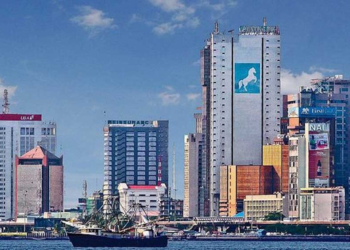Moody’s, the prominent credit rating agency, has announced a series of credit rating downgrades affecting several small to mid-sized U.S. banks. The agency has also issued warnings that it might further downgrade some of the nation’s largest lenders. The primary concern stems from the credit sector’s anticipated testing by funding risks and a decline in profitability.
Moody’s has taken action by lowering the credit ratings of ten banks by a single notch. Additionally, it has placed six major banking institutions, including Bank of New York Mellon (BK.N), US Bancorp (USB.N), State Street (STT.N), and Truist Financial (TFC.N), under review for potential future downgrades.
A statement from Moody’s noted, “Many banks’ second-quarter results showed growing profitability pressures that will reduce their ability to generate internal capital.” The warning comes amid predictions of a mild U.S. recession expected to emerge in early 2024. This economic outlook is accompanied by concerns about declining asset quality, particularly within the commercial real estate (CRE) portfolios of certain banks.
Elevated exposures to CRE stand as a significant risk factor, attributed to elevated interest rates, decreased office demand resulting from remote work trends, and a reduction in the availability of CRE credit.
Moody’s has not only adjusted credit ratings but also altered its outlook to negative for eleven major lenders, which include Capital One (COF.N), Citizens Financial (CFG.N), and Fifth Third Bancorp (FITB.O).
The events of the past year, including the collapses of Silicon Valley Bank and Signature Bank, have triggered a crisis of confidence in the U.S. banking sector. Despite emergency measures to instill confidence, a run on deposits at numerous regional banks unfolded.
Moody’s further cautioned that banks carrying substantial unrealized losses, not yet reflected in their regulatory capital ratios, face vulnerability in the current high-rate environment due to potential confidence erosion.
The credit rating downgrades and negative outlook projections come amidst a backdrop of tightening monetary conditions resulting from accelerated interest rate hikes by the Federal Reserve, curbing both demand and borrowing.
With the rise in interest rates, concerns about a potential recession have surfaced, putting added pressure on sectors like real estate to adjust to the post-pandemic landscape.
In light of these developments, last week’s data from a Federal Reserve survey indicated that U.S. banks reported tighter credit standards and diminished loan demand from both businesses and consumers during the second quarter.
As lending dynamics shift, analysts from Morgan Stanley predict that loan demand is likely to continue weakening, with the rate of change slowing further.
It’s noteworthy that Fitch, another prominent rating agency, recently downgraded the United States’ credit rating by a notch to AA+ due to projected fiscal deterioration over the next few years and ongoing debt ceiling negotiations.
Among the institutions affected by Moody’s downgrades are M&T Bank (MTB.N), Pinnacle Financial Partners (PNFP.O), Prosperity Bank, and BOK Financial Corp (BOKF.O).











